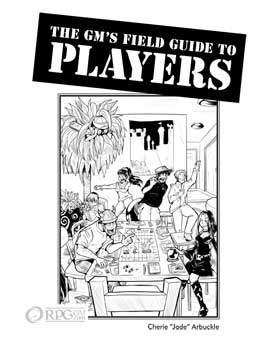In The Adventure Creation Handbook, I talk about using adventure archetypes as a way to help you develop plot details. Below are 18 adventure archetypes, along with the plot elements each one generally needs to be successful.
Archetype |
Needs |
| Babysitting | Someone or something to watch over, someone trying to capture what’s being baby sat, a map of the “sitee’s” location |
| Escort | Thing or person to escort, place to escort them from, place to escort them to, map of route, something or someone trying to prevent them from getting there. |
| Raid | Place to raid, item(s) to obtain in raid, guards, map of location, defensive measures/traps. |
| Kidnapping | Someone to kidnap, guards, traps, and other defensive measures to prevent kidnapping, reason for kidnapping the victim, Location to bring victim to once kidnapped. |
| Exploration | Unknown area to explore, random encounter tables, perhaps reason for exploring |
| Rescue | Someone to rescue, a place to rescue them from, defensive measures to prevent rescue, reason why rescuee was taken |
| Robbery | Place to rob, item to obtain (can be specific item or general type of item, such as “valuable”), defensive measures to prevent theft. |
| Bounty Hunt | Person(s) to hunt, bounty reward, person or organization that wants huntee found |
| Breakout/Escape | Jail, defenses to prevent escape, person to break out (if not the PCs themselves), reason why prisonner(s) is/are being held, locations of other prisoners, location of target in prison. |
| Assassination | Person to assassinate, location of victim, person who wants assassination done, reason for assassination |
| Hijacking | Vehicle(s) to be hijacked, driver(s) and passengers of vehicles, person who wants the hijacking done, reason for hijacking, hijacker’s demands, location to take vehicle(s) to. |
| Bug Hunt | Critter to hunt, reward for successful hunt, location of critter, any defenses critter may have built |
| Smuggling | Item or person to smuggle, authorities looking for same, authority checkpoints and personnel to carry out inspections, vehicle to smuggle with, location to take cargo to. |
| Salvage | Wreck in hard-to-reach location, map where wreck is located, treasure to salvage, possibly rumors of treasure’s existence, possibly other group(s) also trying to salvage treasure. |
| Scam | Marks (people to scam), a plan, possibly assistants |
| Spying | Information to gain, plan to get same, people/location to get it from, people who want the information |
| Tournament | Events to compete, other competitors, location of tournament, reward(s) for winners |







